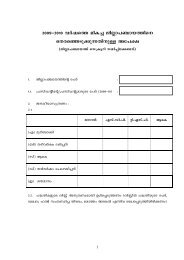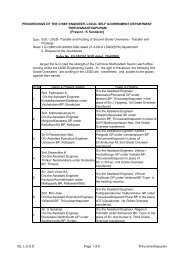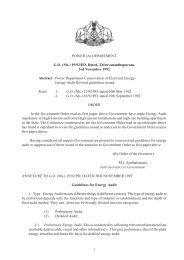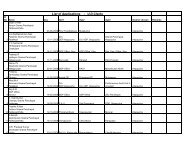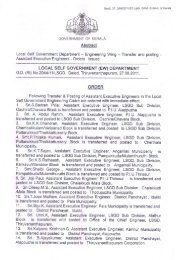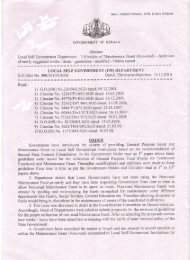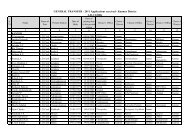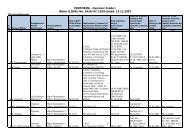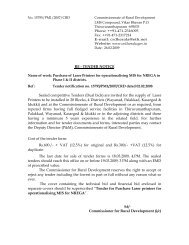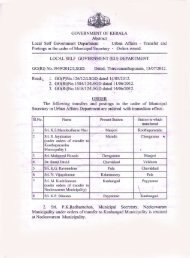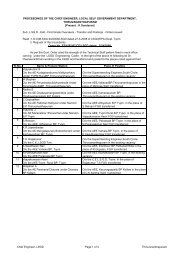Chapter 2 - Kerala Govt Logo
Chapter 2 - Kerala Govt Logo
Chapter 2 - Kerala Govt Logo
- No tags were found...
You also want an ePaper? Increase the reach of your titles
YUMPU automatically turns print PDFs into web optimized ePapers that Google loves.
<strong>Chapter</strong> 2Policy, Legislation and Regulationwill also be utilised for the maintenance of the five central nurseries, and production ofseedlings.2.3.3.5. Housing SchemesReconstruction of One Lakh Housing Scheme (MN LAKSHAM VEEDU PUNARNIRMANAPADHATHI): One lakh housing scheme was launched in 1972. The present condition of mostof the houses so constructed is very pathetic mainly because of three decades of ageingwithout routine repairs and maintenance. The estimated cost of renovation of one houseamounts to Rs1 lakh. The pattern of financing of one house is: Government subsidy Rs 50 000/-(for ST category), Rs 37500/- (for SC category), Rs 25000/- (for General category). The balanceamount shall be met by the Local Bodies/voluntary organizations/ philanthropic individuals.Suraksha Housing Scheme: Under this scheme, assistance will be given to houseless personsowning at least 2 cents of land to construct a house by themselves. The voluntaryorganizations/NGOs shall give assistance to the beneficiary to build the structure up to rooflevel and the government subsidy shall be disbursed on completion of the roof. The financialpattern of the scheme is as follows: Share of beneficiary Rs 25000/-; Share of voluntaryorganization Rs 50000/-; Government subsidy Rs 25000/-2.3.3.6. Wetland Eco-restoration ProgrammesWetland conservation has been a programme in the list of central plan schemes since morethan two decades now. With increasing environmental awareness and realization about therole of wetlands in regulation of ground water regimes, flood regulation and environmentalamelioration due to inherent vibrant biotic activities apart from livelihood issues, their statusas the important environmental natural resources in the scheme of development planning isneeded to be recognised. It is now time that wetlands are considered among the importantinfrastructures for development as rivers, forests, roads, education and health institutions.For a better understanding of the issues critical for any sustainable use strategy for wetlands,a few basic facts need to be appreciated. The following paragraph from the preamble of theNational Environment Policy 2006 (NEP) depicts the spirit of conservation of environmentalresources.“The dominant theme of this policy is that while conservation of environmental resources isnecessary to secure livelihoods and well - being of all, the most secure basis for conservation isto ensure that people dependent on particular resources obtain better livelihoods from thefact of conservation, than from degradation of the resources.”The statement indicates that conservation efforts are to be a part and parcel of its sustainableuse practice, necessitating reciprocal commitment of the users for conservation. The policyalso recognises that wetlands are natural alternatives for waste management due to theirinherent capacity of self assimilation and cleaning with the help of biological activities within.However, it can be done only to the extent till the pollution load is within their assimilativecapacity.




